-
 Bitcoin
Bitcoin $82,622.1616
-1.47% -
 Ethereum
Ethereum $1,820.8424
-3.32% -
 Tether USDt
Tether USDt $0.9997
0.06% -
 XRP
XRP $2.1251
-2.93% -
 BNB
BNB $603.8936
-2.40% -
 Solana
Solana $124.6784
-4.06% -
 USDC
USDC $1.0000
0.03% -
 Dogecoin
Dogecoin $0.1687
-6.35% -
 Cardano
Cardano $0.6710
-4.23% -
 TRON
TRON $0.2331
-0.29% -
 Toncoin
Toncoin $3.7196
-2.44% -
 Chainlink
Chainlink $13.5122
-4.61% -
 UNUS SED LEO
UNUS SED LEO $9.6065
-1.00% -
 Avalanche
Avalanche $19.8174
-0.46% -
 Stellar
Stellar $0.2654
-2.94% -
 Shiba Inu
Shiba Inu $0.0...01255
-4.67% -
 Sui
Sui $2.2803
-9.44% -
 Hedera
Hedera $0.1697
-6.76% -
 Litecoin
Litecoin $85.2873
-1.75% -
 Polkadot
Polkadot $4.0457
-5.60% -
 MANTRA
MANTRA $6.2142
-1.10% -
 Bitcoin Cash
Bitcoin Cash $301.5531
-1.77% -
 Bitget Token
Bitget Token $4.6035
-3.97% -
 Pi
Pi $0.8022
-2.68% -
 Dai
Dai $1.0000
0.01% -
 Ethena USDe
Ethena USDe $0.9997
0.09% -
 Hyperliquid
Hyperliquid $12.7284
-5.02% -
 Monero
Monero $213.6903
-1.47% -
 Uniswap
Uniswap $5.9100
-3.55% -
 Aptos
Aptos $5.1847
-6.37%
How are rewards distributed in DeFi mining?
DeFi mining rewards vary widely, depending on factors like staked assets, protocol performance, and lock-up periods; understanding the specific distribution mechanism and inherent risks (impermanent loss, smart contract vulnerabilities) is crucial before participation.
Mar 25, 2025 at 05:43 pm
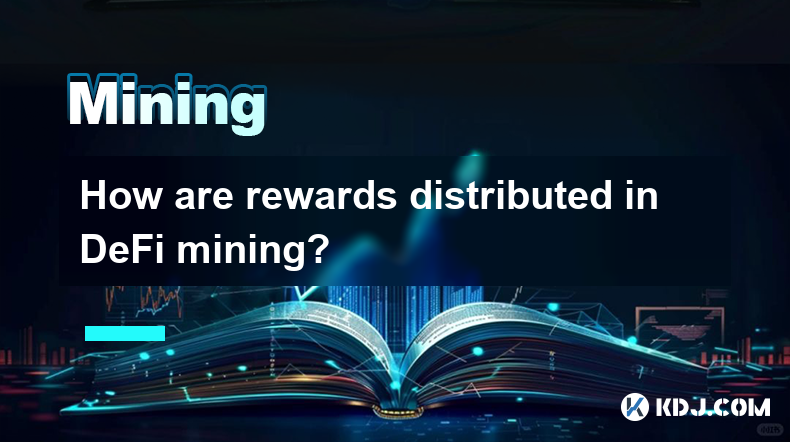
Key Points:
- DeFi mining rewards are distributed differently depending on the specific protocol and its tokenomics.
- Common distribution methods include proportional allocation based on staked assets, block rewards for validators, and liquidity provision rewards.
- The amount of rewards received depends on factors such as the total staked amount, the amount of time assets are locked, and the protocol's overall performance.
- Understanding the specific reward distribution mechanism is crucial before participating in DeFi mining.
- Risks involved in DeFi mining include impermanent loss, smart contract vulnerabilities, and rug pulls.
How are Rewards Distributed in DeFi Mining?
DeFi mining, unlike traditional Bitcoin mining, doesn't involve solving complex cryptographic puzzles. Instead, it involves contributing resources to a decentralized finance (DeFi) protocol in exchange for rewards, typically in the form of the protocol's native token or other cryptocurrencies. The distribution methods are varied and depend heavily on the specific protocol's design.
Common Reward Distribution Mechanisms:
- Staking Rewards: Many DeFi protocols reward users for staking their tokens. This involves locking up tokens within the protocol to secure the network and participate in governance. Rewards are often distributed proportionally to the amount staked, meaning those who stake more receive a larger share of the rewards. The reward distribution is often calculated on a per-block or per-epoch basis.
- Liquidity Provision Rewards: Protocols using automated market makers (AMMs) often reward users who provide liquidity to trading pools. These users earn fees generated from trades executed within the pool, along with potential additional rewards from the protocol itself. The distribution is often proportional to the liquidity provided.
- Yield Farming Rewards: Yield farming involves lending or staking crypto assets across multiple DeFi protocols to maximize returns. Rewards are typically distributed in the form of the platform's native token, or sometimes in a combination of tokens. The distribution varies greatly between platforms.
- Block Rewards: Some DeFi protocols utilize a Proof-of-Stake (PoS) consensus mechanism, rewarding validators who participate in validating transactions and adding new blocks to the blockchain. The rewards are distributed proportionally to the amount of staked tokens.
- Governance Rewards: Participation in governance activities, such as voting on proposals, can also earn rewards in some DeFi protocols. These rewards incentivize community participation in the protocol's development and direction.
Factors Affecting Reward Distribution:
The amount of rewards a user receives isn't solely determined by the amount of assets staked or liquidity provided. Several other factors play a crucial role:
- Total Staked Amount: The larger the total amount of assets staked in a protocol, the smaller the individual reward per unit staked will be.
- Lock-up Period: Some protocols offer higher rewards for locking up assets for longer periods. This incentivizes long-term commitment to the protocol.
- Protocol Performance: The overall performance of the protocol, including trading volume and network activity, can significantly impact the rewards generated.
Risks Involved in DeFi Mining:
DeFi mining, while potentially lucrative, carries several inherent risks:
- Impermanent Loss: This is a risk associated with liquidity provision. If the price ratio of the assets in a trading pool changes significantly, a user might experience a loss compared to simply holding the assets.
- Smart Contract Vulnerabilities: DeFi protocols are built on smart contracts, which are susceptible to vulnerabilities. Exploits could result in the loss of user funds.
- Rug Pulls: Malicious developers can create a DeFi protocol, attract users, and then drain the funds. This is a significant risk, especially with lesser-known protocols.
- Market Volatility: The value of the rewards received can fluctuate significantly depending on the market price of the underlying cryptocurrencies.
Common Questions and Answers:
Q: What is the difference between DeFi mining and traditional Bitcoin mining?
A: Traditional Bitcoin mining involves solving complex cryptographic puzzles to validate transactions and earn Bitcoin. DeFi mining involves contributing resources to a DeFi protocol, such as staking or providing liquidity, to earn rewards in the form of crypto tokens.
Q: Are DeFi mining rewards taxable?
A: Yes, in most jurisdictions, DeFi mining rewards are considered taxable income. The specific tax implications depend on your location and the applicable tax laws. Consult a tax professional for advice.
Q: How do I choose a reputable DeFi mining protocol?
A: Research thoroughly. Look for protocols with transparent tokenomics, audited smart contracts, a strong community, and a proven track record. Be wary of projects with unrealistic promises or a lack of transparency.
Q: What are the best DeFi mining strategies?
A: There's no one-size-fits-all "best" strategy. The optimal approach depends on your risk tolerance, investment goals, and understanding of different DeFi protocols. Diversification across multiple protocols is often recommended.
Q: How can I protect myself from DeFi mining risks?
A: Conduct thorough due diligence before participating in any DeFi protocol. Only invest what you can afford to lose. Use secure wallets and follow best practices for protecting your private keys. Stay informed about the latest security vulnerabilities and market trends.
Q: What are the long-term prospects of DeFi mining?
A: The long-term prospects of DeFi mining are uncertain, as the DeFi landscape is constantly evolving. The profitability and viability of DeFi mining strategies depend on various factors, including technological advancements, regulatory changes, and market dynamics.
Disclaimer:info@kdj.com
The information provided is not trading advice. kdj.com does not assume any responsibility for any investments made based on the information provided in this article. Cryptocurrencies are highly volatile and it is highly recommended that you invest with caution after thorough research!
If you believe that the content used on this website infringes your copyright, please contact us immediately (info@kdj.com) and we will delete it promptly.
- Pepe (PEPE) Meme Coin Loses Key Support and Is Poised for a Massive Price Drop
- 2025-03-30 04:00:12
- PEPE (PEPE) MEME COIN DUMPED CITY AND HOLDS AHEAD OF MARKET Sentiment Decline
- 2025-03-30 04:00:12
- Rexas Finance (RXS) Emerges as a Contender in the Cryptocurrency Market
- 2025-03-30 03:55:12
- Naira Records Its First Relative Gain Against the Dollar This Week
- 2025-03-30 03:55:12
- Qubetics (TICS) is a blockchain project that introduces the QubeQode IDE, simplifying development
- 2025-03-30 03:50:12
- Qubetics (TICS): The Non-Custodial Wallet Ready to Disrupt Web3
- 2025-03-30 03:50:12
Related knowledge
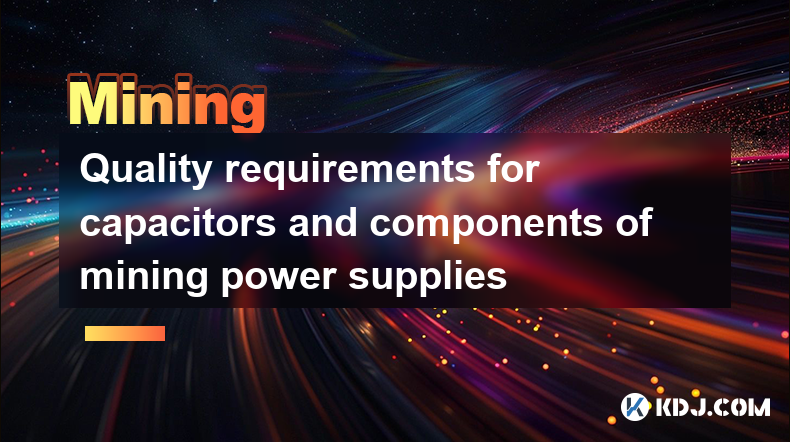
Quality requirements for capacitors and components of mining power supplies
Mar 29,2025 at 02:57pm
The Crucial Role of Power Supply Components in MiningMining cryptocurrencies, especially those using Proof-of-Work consensus mechanisms, demands significant computational power. This translates to a high power consumption, placing immense strain on the power supply units (PSUs) of mining rigs. The reliability and longevity of these PSUs are directly ti...
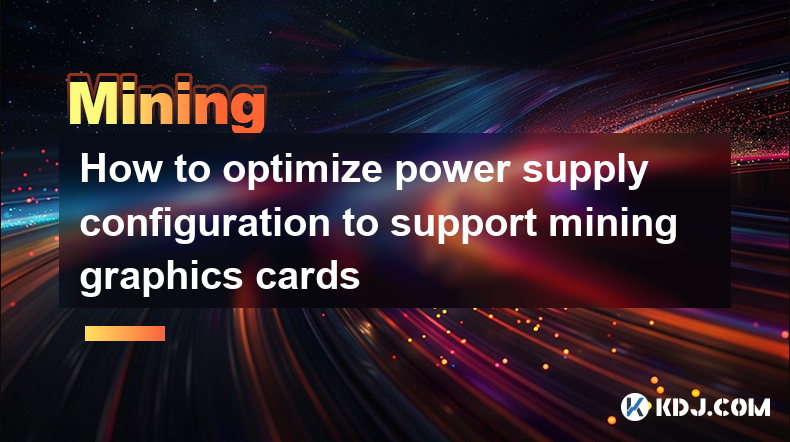
How to optimize power supply configuration to support mining graphics cards
Mar 29,2025 at 10:00pm
Understanding Power Consumption in GPU MiningMining cryptocurrencies, especially with graphics cards (GPUs), is an energy-intensive process. Understanding your power needs is crucial to avoid damaging your hardware or experiencing instability. Each GPU has a specific power draw, usually listed in its specifications. You also need to factor in the power...
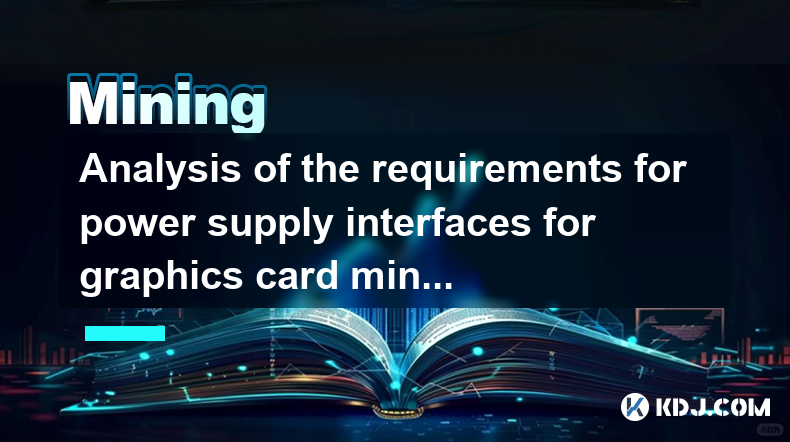
Analysis of the requirements for power supply interfaces for graphics card mining
Mar 29,2025 at 07:35pm
Understanding Power Supply Needs for GPU MiningGraphics card mining, particularly with high-end GPUs, demands substantial power. Understanding the power supply interface requirements is crucial for efficient and safe operation. Different GPUs have varying power consumption profiles and connector types. Failure to meet these requirements can lead to ins...
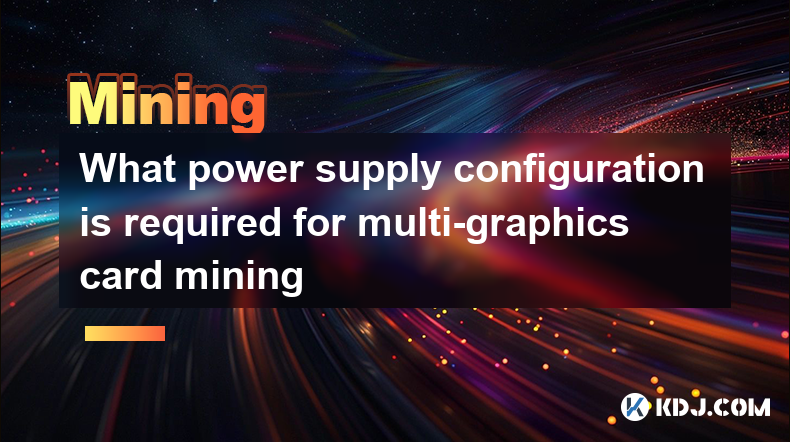
What power supply configuration is required for multi-graphics card mining
Mar 29,2025 at 11:08am
? Power Supply Needs for Multi-GPU Mining RigsMining cryptocurrency, particularly with multiple graphics cards (GPUs), demands a robust and reliable power supply. The power requirements aren't simply the sum of each GPU's TDP (Thermal Design Power). Several other components contribute significantly to the overall energy draw. Understanding these factors...
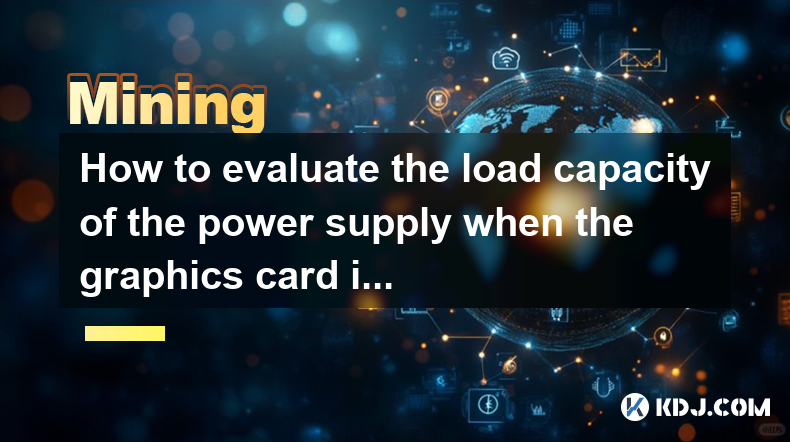
How to evaluate the load capacity of the power supply when the graphics card is mining
Mar 29,2025 at 11:14am
How to Evaluate the Power Supply Load Capacity When the Graphics Card is Mining Understanding Power Consumption in Cryptocurrency MiningCryptocurrency mining, particularly with GPUs, is a power-intensive process. Understanding your power supply's capabilities is crucial to prevent damage to your hardware and ensure stable operation. Insufficient power c...
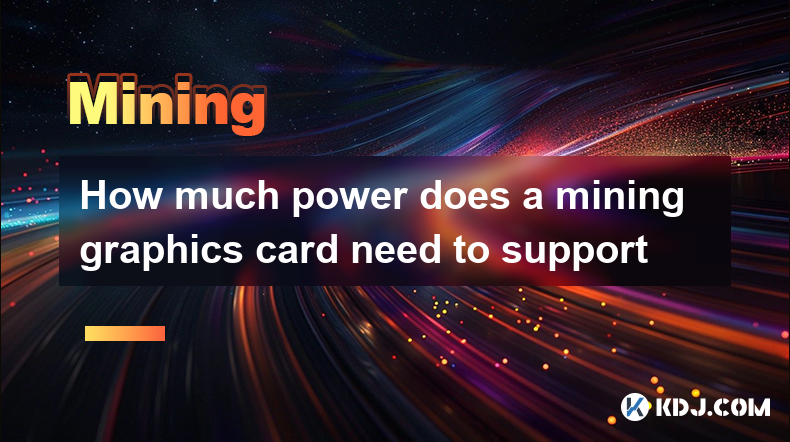
How much power does a mining graphics card need to support
Mar 29,2025 at 04:14pm
? Power Consumption in Cryptocurrency MiningThe power consumption of a graphics card (GPU) used for cryptocurrency mining is a crucial factor determining profitability and operational costs. The power draw isn't a fixed number; it varies significantly depending on several key aspects of both the card itself and the mining operation. Understanding these ...

Quality requirements for capacitors and components of mining power supplies
Mar 29,2025 at 02:57pm
The Crucial Role of Power Supply Components in MiningMining cryptocurrencies, especially those using Proof-of-Work consensus mechanisms, demands significant computational power. This translates to a high power consumption, placing immense strain on the power supply units (PSUs) of mining rigs. The reliability and longevity of these PSUs are directly ti...

How to optimize power supply configuration to support mining graphics cards
Mar 29,2025 at 10:00pm
Understanding Power Consumption in GPU MiningMining cryptocurrencies, especially with graphics cards (GPUs), is an energy-intensive process. Understanding your power needs is crucial to avoid damaging your hardware or experiencing instability. Each GPU has a specific power draw, usually listed in its specifications. You also need to factor in the power...

Analysis of the requirements for power supply interfaces for graphics card mining
Mar 29,2025 at 07:35pm
Understanding Power Supply Needs for GPU MiningGraphics card mining, particularly with high-end GPUs, demands substantial power. Understanding the power supply interface requirements is crucial for efficient and safe operation. Different GPUs have varying power consumption profiles and connector types. Failure to meet these requirements can lead to ins...

What power supply configuration is required for multi-graphics card mining
Mar 29,2025 at 11:08am
? Power Supply Needs for Multi-GPU Mining RigsMining cryptocurrency, particularly with multiple graphics cards (GPUs), demands a robust and reliable power supply. The power requirements aren't simply the sum of each GPU's TDP (Thermal Design Power). Several other components contribute significantly to the overall energy draw. Understanding these factors...

How to evaluate the load capacity of the power supply when the graphics card is mining
Mar 29,2025 at 11:14am
How to Evaluate the Power Supply Load Capacity When the Graphics Card is Mining Understanding Power Consumption in Cryptocurrency MiningCryptocurrency mining, particularly with GPUs, is a power-intensive process. Understanding your power supply's capabilities is crucial to prevent damage to your hardware and ensure stable operation. Insufficient power c...

How much power does a mining graphics card need to support
Mar 29,2025 at 04:14pm
? Power Consumption in Cryptocurrency MiningThe power consumption of a graphics card (GPU) used for cryptocurrency mining is a crucial factor determining profitability and operational costs. The power draw isn't a fixed number; it varies significantly depending on several key aspects of both the card itself and the mining operation. Understanding these ...
See all articles






















































































